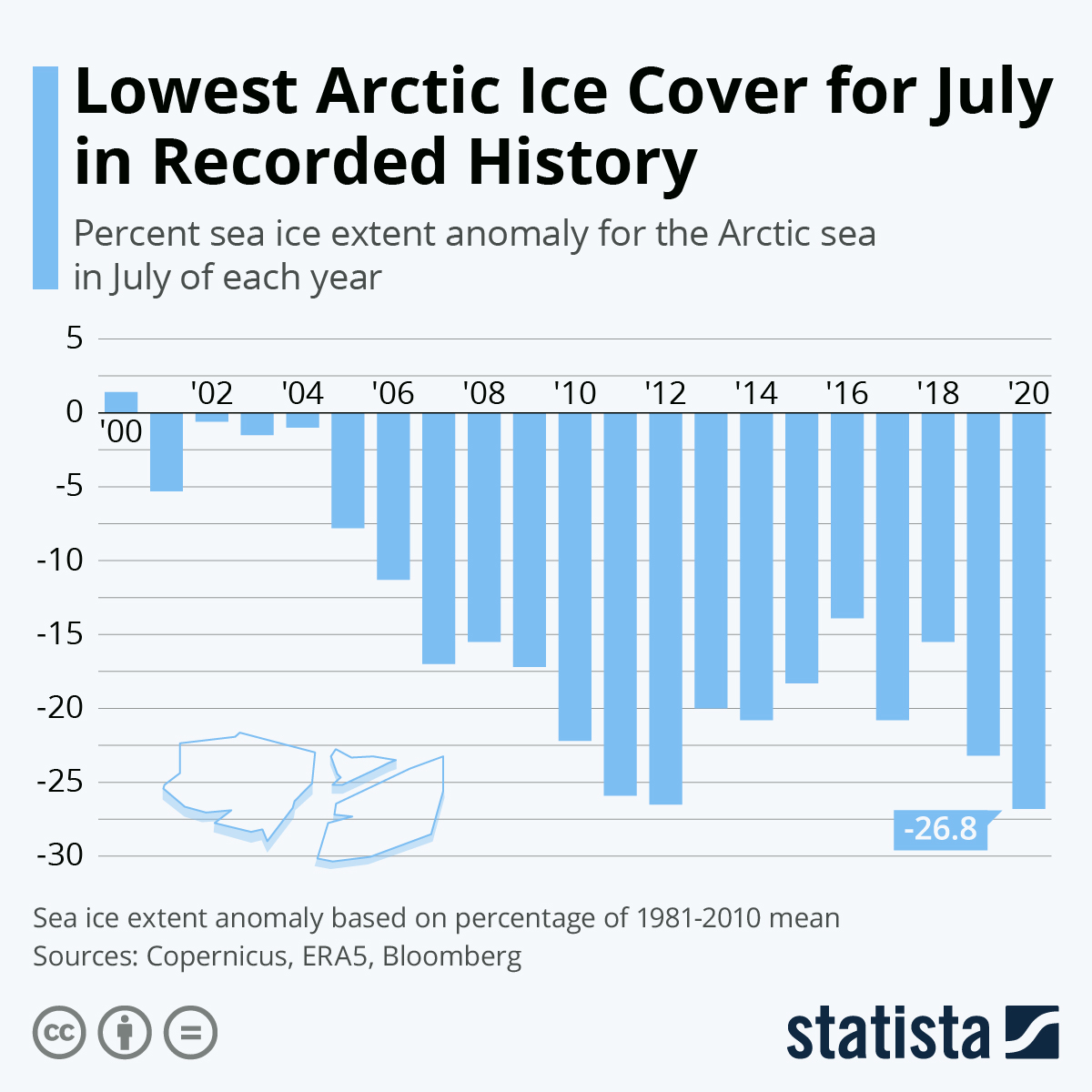As pandemic chaos rages on for another month across the world, warnings from scientists on looming climate change threats continue to build. More evidence on rising global temperatures was presented this month, this time showing how ice cover on the Arctic sea is at its lowest point in history for July.
According to the Copernicus Climate Change Service provided by the European Union, the percent change in sea ice extent anomaly fell by over 26 percent for 2020 from the July mean between 1981-2010. That’s a continuation of an accelerated pace beginning in 2005, when percent changes fell drastically by nearly 8 percent. From 2005-2020, the mean percent decline in sea ice extent anomaly is nearly 19 percent from the mean recorded between 1981-2010.
The levels for July 2020 are the lowest for the Arctic sea since at least 1979, as records of ice cover began in 1981. Scientists say the Arctic is warming more than twice as fast as the rest of the planet, and this year, it has faced a record heatwave through spring and summer along with earlier-than-usual natural fires.
According to Copernicus, this last month was the third-warmest July in history across the planet. Based on the 1981-2010 temperature mean, July was roughly half a degree Celsius warmer than average.





















